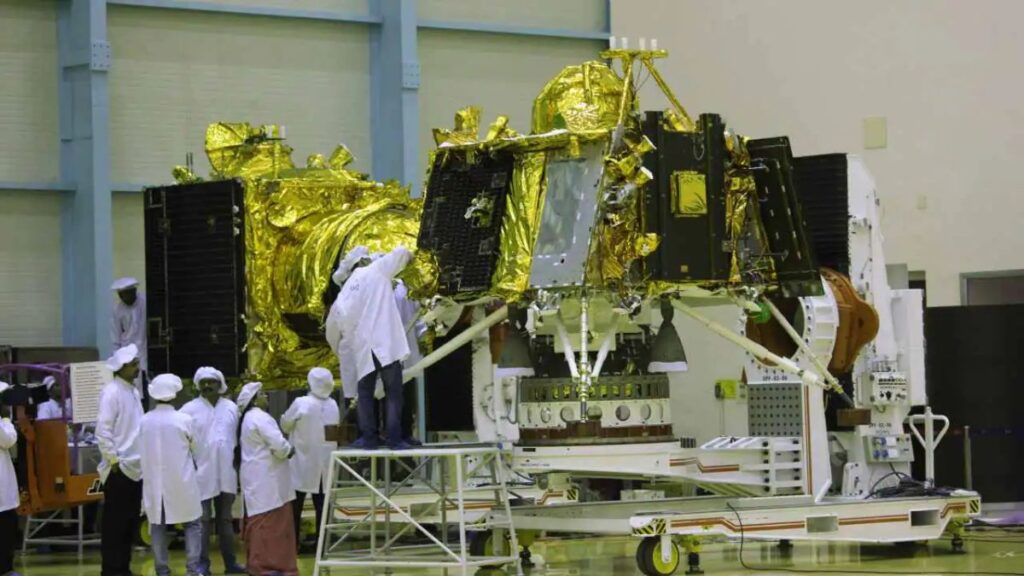The combined Chandrayaan-3 satellite and LVM-3 rocket are at the launchpad at the Sathish Dhawan Space Centre in Sriharikota, according to the Indian Space Research Organisation (ISRO), which will conduct the launch. On July 14, it is planned to launch at 2.30 PM. Here is all the information you require regarding the mission.
On Tuesday, the ISRO said that it had conducted a 24-hour “launch rehearsal” to simulate every step of the Chandrayaan-3 mission’s launch process. On July 11, ISRO tweeted, “The ‘Launch Rehearsal’ mimicking the whole launch preparations and procedures lasting 24 hours has been finished.
Objective: Know about ISRO’s ‘Failure-Based Design
Chandrayaan-3 is a follow-up mission to Chandrayaan-2, which crashed and landed in September 2019 due to a software error.
For the second attempt, ISRO announced before launch that it had chosen a “failure-based design” to guarantee that the rover lands on the Moon successfully, even if certain things go wrong.
In Chandrayaan-3, the space agency chose a failure-based design, focusing on what could go wrong and how to protect it to ensure a successful landing, according to ISRO Chairman S Somanath.
The head of ISRO provided minute details regarding what went wrong with the Vikram lander of Chandrayaan-2 as it hurtled towards the designated 500 m x 500 m landing location on the lunar surface with the engines intended to slow it down, accumulating higher thrust than anticipated.
According to Somanath, the landing space has increased from 500m x 500m to four kilometers by 2.5 km this time.
It can land anywhere, so you are not forced to aim at a particular location. It will only seek in a specific place under ideal circumstances. As a result, if the performance is subpar, it might happen anywhere in that range, he noted.
He claimed that the Chandrayaan-3 has more fuel, increasing its ability to maneuver, handle dispersion, and choose a different landing spot.
According to the ISRO director, the Vikram lander now has extra solar panels on different surfaces to ensure that it can generate power regardless of how it lands. He stated that while cranes were used to test the landing procedures, the spacecraft was also flown over various terrains to test its ability to tolerate vibrations.
Chandrayaan-3 Spacecraft Design
The lander module, propulsion module, and rover are the three components that make up the Chandrayaan-3 spacecraft. The lander is intended to deploy the rover after a gentle landing at a designated location on the Moon. The rover will chemically analyze the lunar surface. Numerous scientific payloads are carried by both the lander and the rover for use in lunar surface experiments.

Before it separates from the other modules, the propulsion module’s principal job is to move the lander and rover from “launch vehicle injection” to a 100-kilometer circular polar lunar orbit. A scientific payload on the propulsion module will start operating following separation.
Chandrayaan-3’s LVM-3
The three-stage medium-lift launch vehicle LVM-3, also known as Launch Vehicle Mark III, was created by ISRO and was formerly known as the GSLV Mark III. It will be used to launch the Chandrayaan-3 mission and is the most potent rocket in the space agency’s arsenal.
The vehicle has a 4-meter diameter and is 43.5 meters tall. Its launch mass is 640 tonnes. Up to 8,000 kilograms of payload can be transported by it to a low-Earth orbit. A geostationary transfer orbit can be reached by adding another 4,000 kilograms of cargo to the vehicle.
In conclusion, the upcoming launch of Chandrayaan-3 represents India’s determination to rectify the setbacks faced during Chandrayaan-2. Employing a failure-based design approach, the Indian Space Research Organisation (ISRO) has diligently addressed the previous mission’s shortcomings. With improved landing capabilities, extra fuel, and enhanced power generation, Chandrayaan-3 aims to analyze the lunar surface and conduct valuable experiments successfully. The launch of this mission, scheduled for July 14, holds great promise for India’s space exploration endeavors.
☛ Also Read: Remembering APJ Abdul Kalam




































